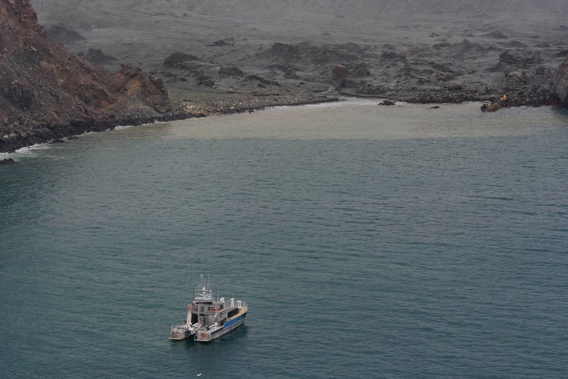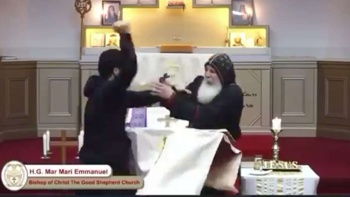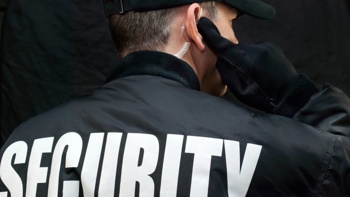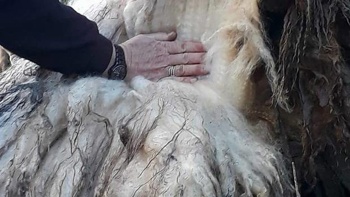
The search for the last two bodies remaining on Whakaari/White Island will continue this morning, after six bodies were recovered from the volcano yesterday.
The risky work to return the dead to their loved ones began at first light yesterday, after Monday's eruption which took the lives of 16 people and injured 30, most critically.
Police said this morning the police dive squad and Navy divers woukd resume their search for a body seen in the water on Tuesday.
(Article continued below live blog)
They also hoped to conduct land searches.
"Following the successful recovery of six bodies from the island yesterday, Police and partner agencies are today analysing all information and assessing possible next steps.
"Today's planning will allow us to return to the island to conduct further land-based searches for the remaining deceased, as the environment on and around the island allows."
Eight Defence Force members wearing full protective clothing, including closed-circuit breathing apparatus to guard against the toxic gases, landed on White Island, where they retrieved six of the eight bodies left behind after Monday's deadly eruption.
The bodies were then flown to the Navy ship HMNZS Wellington, which was anchored off the island, then airlifted to Whakatane Airport.
/arc-anglerfish-syd-prod-nzme.s3.amazonaws.com/public/VWPEDTDGMBBJDKBFSVDR5LQYAI.jpg)
There, families had time to sit among their loved ones' coffins - despite not knowing which was their particular family member, deputy Labour leader Kelvin Davis said.
There was a sense of calmness, peace and overriding grief during that time, Davis said.
"It was just an opportunity - as they said - regardless of whether we're from Australia or New Zealand or wherever, at that moment we're one whanau and we'll mourn everybody as if they are our own."
The bodies were then flown by helicopter to Whenuapai airbase, where they were met by the solemn sight of a row of hearses lined up on the tarmac. The bodies were taken to Auckland Hospital, where post mortems are taking place.
This morning, police detailed the victim identification process for those recovered.
The process involved police disaster victim identification (DVI) experts, forensic pathologists, ESR, odontologists and the Coroner's office.
An internationally approved process was being followed, police said in a statement and it could take some time.
"This is a long and complex process and we are working as quickly as possible to return loved ones to their families," said Deputy Commissioner John Tims, National Operations Commander.
Police lead the DVI process through the gathering of evidence and working with families of those who are missing.
The coroner must then confirm the victims' identities.
/arc-anglerfish-syd-prod-nzme.s3.amazonaws.com/public/IBRO7LFWEJA43LRDRHVSZJL3RI.jpg)
"The victims and their families are our priority but we also have important obligations," Tims said.
"We must work on behalf of the coroner to ensure correct identification. It would be unforgivable to get the identification process wrong."
There five stages of the process are:
Phase 1: Scene
• The deceased are examined and documented before being taken to the mortuary.
Phase 2: Mortuary
• They are examined in detail by a pathologist, forensic dentist, fingerprint officer and the police DVI team.
• Personal effects (such as jewellery and clothing) are photographed then examined, cleaned, re-photographed and secured.
Information about the missing person is brought in from outside
Phase 3: Ante-mortem Information retrieval
• Police gather information about possible victims, such as descriptions of appearance, clothing, jewellery, photos, medical and dental records, x-rays, fingerprints, from objects or official records (commonly collected by some overseas agencies) and DNA samples (such as from a hairbrush, toothbrush or blood sample).
Phase 4: Reconciliation
• Information from post-mortem and ante-mortem phases are brought together to find a match.
• At an identification hearing, the Coroner is presented evidence of the match by fingerprint, dentistry, DNA and Police DVI experts and decides if identification has been established.
• Family and/or foreign authorities are advised, then media.
Phase 5: Debrief
• People involved in the DVI process keep each other updated throughout all stages.
• Support and welfare is made available to staff including stress and grief counsellors, chaplains, Victim Support and police welfare officers.
Yesterday's retrieval began with a blessing held at sea with iwi and representatives of those who died.
Family members then returned to the mainland as the daring retrieval operation began.
/arc-anglerfish-syd-prod-nzme.s3.amazonaws.com/public/27I5M3TRLVC3BPBCR4WD5XHUOU.jpg)
It involved eight people on the ground and dozens more behind the scenes and was, Deputy Commissioner Mike Clement said, not without risk.
The NZDF staff on the island were six men and two women from the explosive ordnance disposal squad, Defence Force Colonel Rian McKinstry said.
Despite the protective clothing they were not completely protected from another eruption, with the risk of another eruption within 24 hours still judged to be 50/50 by GeoNet scientists.
There was a 6 per cent chance in any three hour period that the volcano would erupt, McKinstry said.
"We had a good quality mapping, that we had briefed our teams on, so they knew the general area of where those persons lay."
/media.nzherald.co.nz/webcontent/infographics/3377/Rescue.jpg)
It was a unique task for the team, who were also backed up by a second team on standby, but "well within their level of capability".
"As far as their demeanour is concerned, because of the bomb disposal nature of the trade, you can take it they are very level-headed individuals."
However, they would have "experienced things today" that required a debrief, he said.
"I am incredibly proud of these individuals."
Bringing back the bodies was the right thing to do, Prime Minister Jacinda Ardern said.
"We know that reunification won't ease that sense of loss or grief. I don't think anything can.
"We felt an enormous duty of care as New Zealanders to bring them back."
Mark Inman, whose White Island Tours guide brother Hayden Marshall-Inman was believed among the bodies on the island, today spoke of his relief at the retrieval efforts.
Marshall-Inman is believed to have died after he went back to help others after Monday's eruption, which occurred as tourists, mostly from Australia, were visiting the island.
"It's going to allow us to grieve and send our loved ones off in the manner they deserve."
Take your Radio, Podcasts and Music with you









